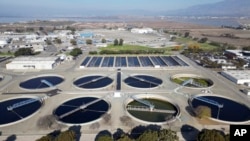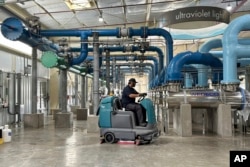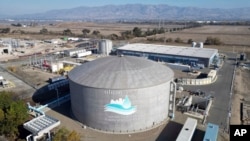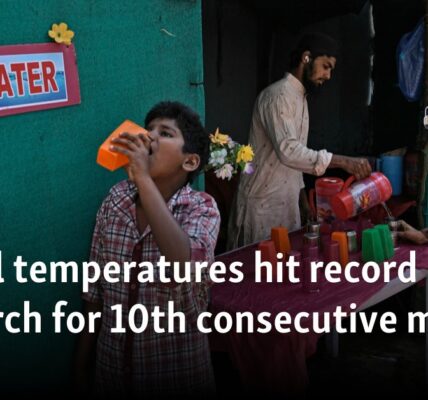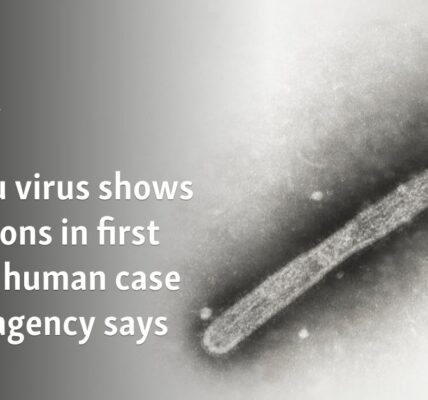California, a state that frequently experiences droughts, has approved new regulations that allow for the direct conversion of wastewater into drinking water.
After being flushed in California, toilet water has the potential to be distributed to various locations including an ice skating rink in Ontario, ski slopes near Lake Tahoe, and farmland in the Central Valley.
Also, kitchen faucets will be available soon.
On Tuesday, California regulators gave the green light to new regulations that allow water agencies to reuse wastewater and return it to the pipes that supply drinking water to residential, educational, and commercial properties.
This is a significant advancement for a state that has faced challenges in obtaining dependable sources of drinking water for its 39 million inhabitants. It also demonstrates a change in public perception regarding a topic that, just 20 years ago, resulted in opposition and the cancellation of similar initiatives.
In the time since, California has experienced numerous severe droughts, including the most recent one which experts claim was the driest three-year span ever recorded and resulted in dangerously depleted reservoirs throughout the state.
Jennifer West, the managing director of WateReuse California, emphasized the value of water in California and stressed the significance of reusing it.
For many years, California has employed treated wastewater for various purposes. The Ontario Reign, a minor league hockey team, has utilized it to create ice for their rink in Southern California. Additionally, the Soda Springs Ski Resort near Lake Tahoe has utilized it to produce snow. In the Central Valley, where a significant amount of the country’s produce is grown, farmers use it to irrigate their crops.
However, it has not been utilized for drinking water purposes. Orange County runs a significant water treatment system which repurposes wastewater and utilizes it to replenish underground aquifers. The water combines with the groundwater for several months before being extracted and reused for drinking purposes once more.
The recent regulations in California would permit water agencies to recycle wastewater and reintroduce it into the drinking water system, but it is not mandatory. California would become the second state, after Colorado, to legalize this practice.
Regulators have spent over a decade creating these regulations, which involved multiple evaluations by panels of impartial scientists. A state statute mandated that the California Water Resources Control Board must approve these rules by December 31st, a deadline that was barely met with only a few days remaining.
Several of the state’s largest water agencies praised the vote, as they have plans to construct large-scale water recycling facilities in the near future. The Metropolitan Water District of Southern California, which provides water to 19 million individuals, intends to generate up to 570 million liters (150 million gallons) of both direct and indirect recycled water per day. In San Diego, a project is striving to supply nearly half of the city’s water needs by 2035.
Water organizations will require the endorsement of the public to successfully carry out these initiatives – this entails persuading consumers that not only is recycled water potable, but it is also not unappealing.
The state of California has implemented new regulations that mandate the removal of all pathogens and viruses from wastewater, regardless of whether they are present or not. This differs from the usual water treatment guidelines, which only require treatment for known pathogens. Darrin Polhemus, deputy director of the division of drinking water for the California Water Resources Control Board, stated this distinction.
The treatment used is very strict and eliminates all of the minerals that give fresh drinking water its pleasant taste. As a result, these minerals must be reintroduced after the treatment is complete.
According to Polhemus, the drinking water quality is equivalent or possibly even superior in some cases.
It is costly and requires significant time to construct these treatment facilities, leading Polhemus to state that it will primarily be available to larger, well-funded cities, at least in the beginning.
Local authorities in San Jose have launched public tours of the Silicon Valley Advanced Water Purification Center, as stated by Kirsten Struve, who serves as the assistant officer for the water supply division at the Santa Clara Valley Water District. The purpose of these tours is to showcase the advanced and technologically advanced methods used in the purification process, which guarantees the production of high-quality and ultra-clean water.
Currently, the organization utilizes the water for activities such as watering parks and sports fields. However, they have intentions to utilize it for potable water in the future.
According to Struve, we reside in California where droughts frequently occur. As a result of climate change, this issue will only exacerbate. Struve also stated that our communities will require a drought-resistant supply in the future to fulfill their needs.
Joaquin Esquivel, who presides over the Water Resources Control Board that passed the new regulations on Tuesday, pointed out that many individuals are already consuming recycled water. This is because most sewage treatment facilities return their treated water to rivers and streams, where it travels downstream to other communities for consumption.
According to Esquivel, everyone who uses drinking water downstream from a wastewater treatment plant discharge is essentially drinking recycled water from toilets. This is because all water is recycled, but we have standards, scientific processes, and monitoring in place to ensure that the water is safe to drink.
Source: voanews.com
